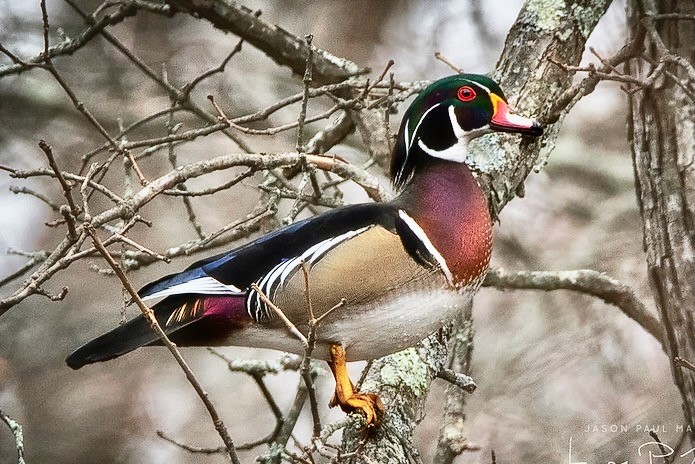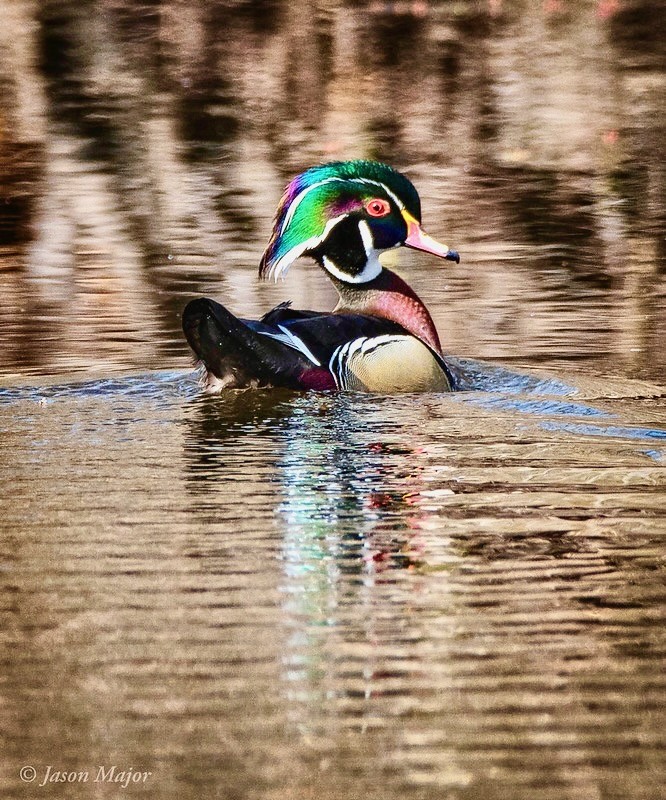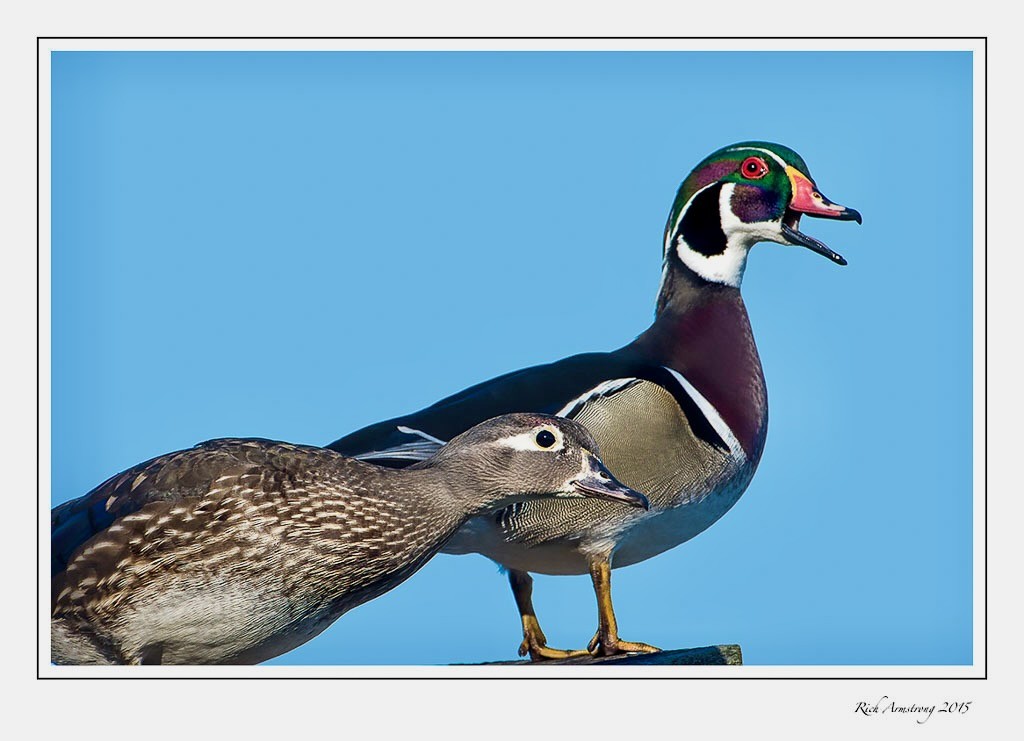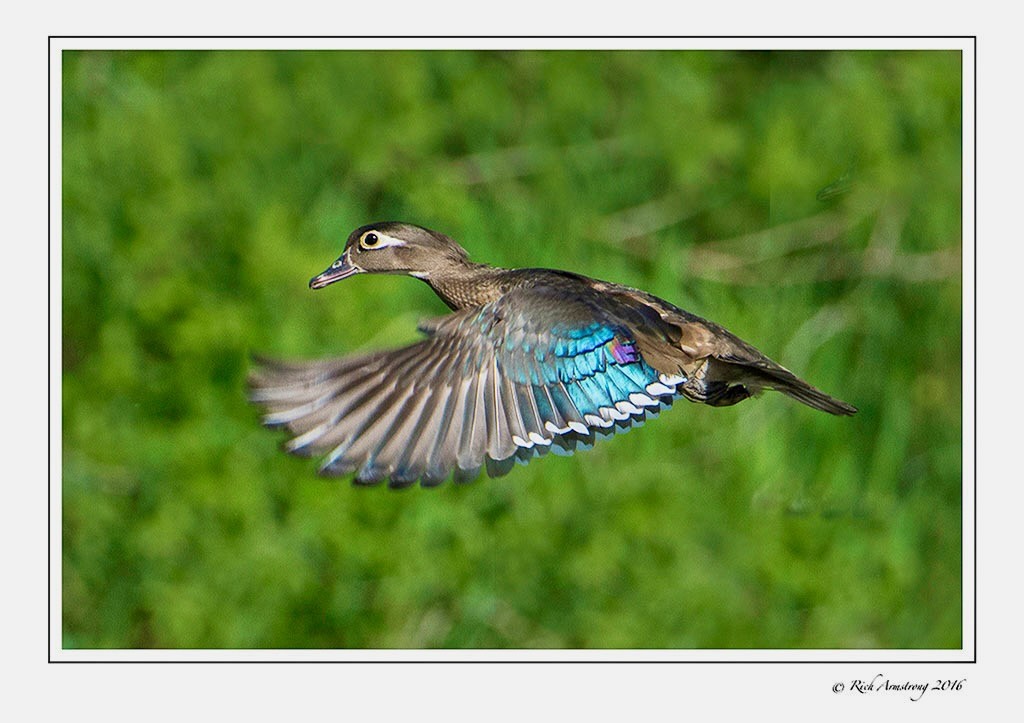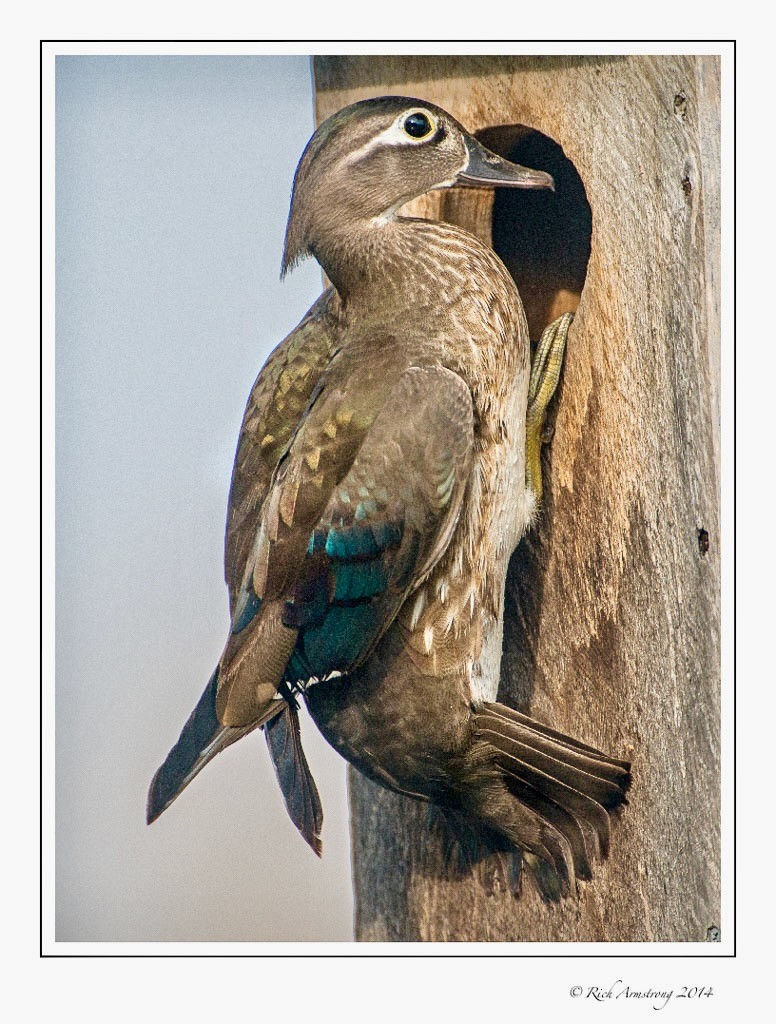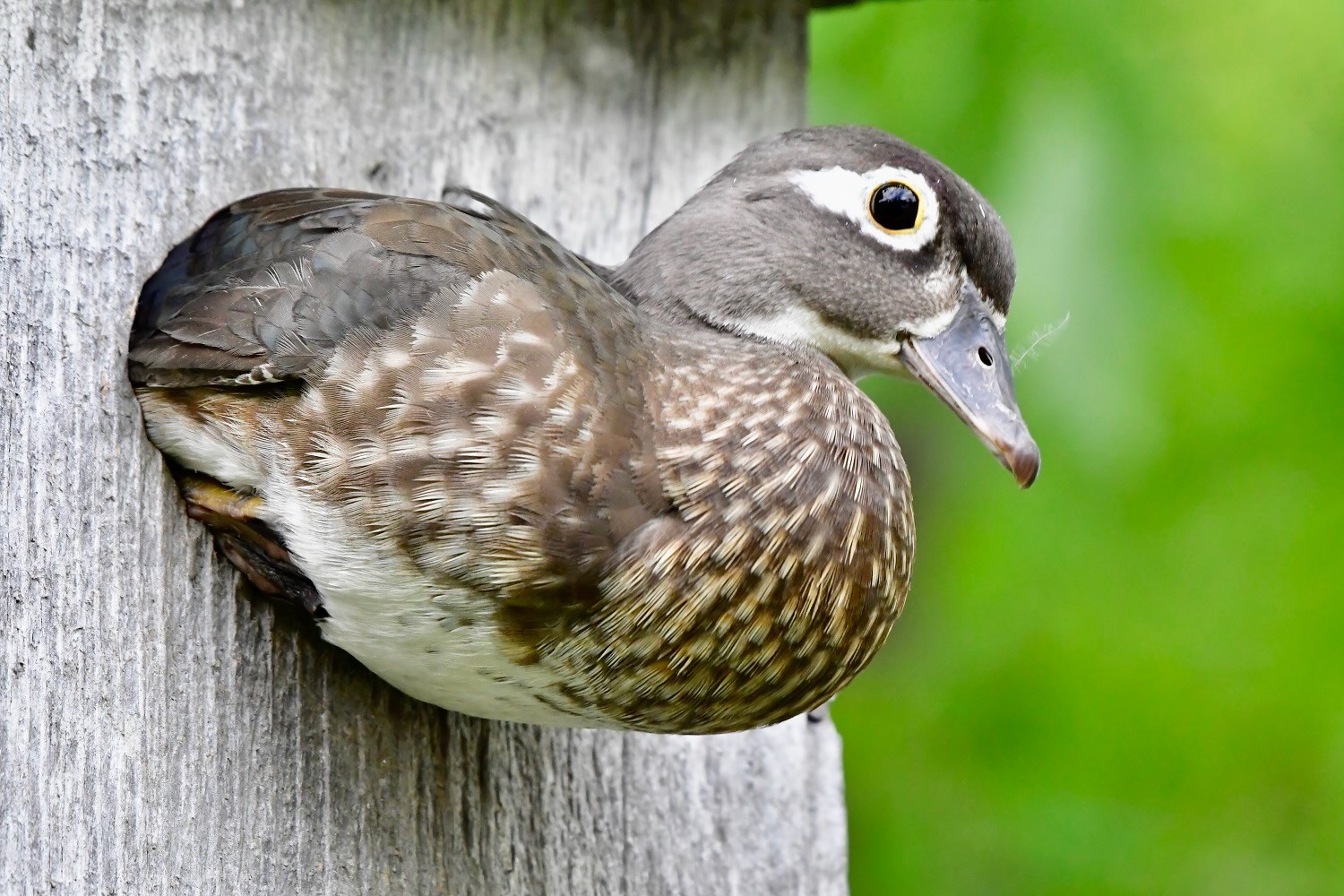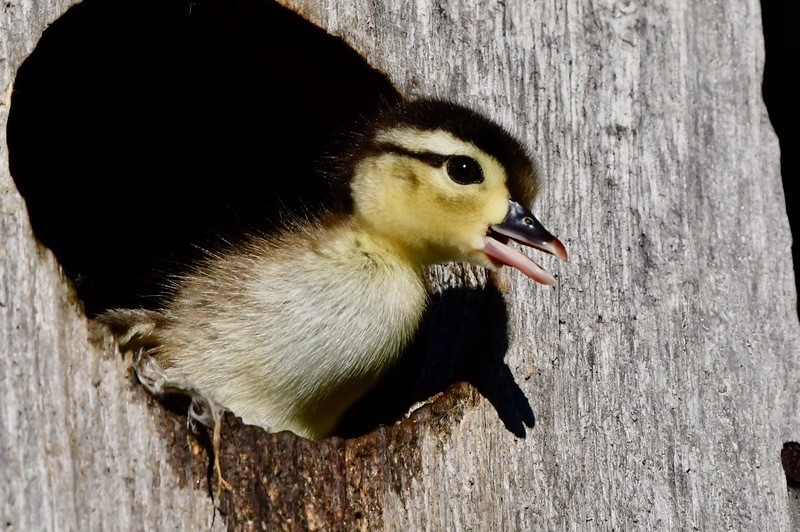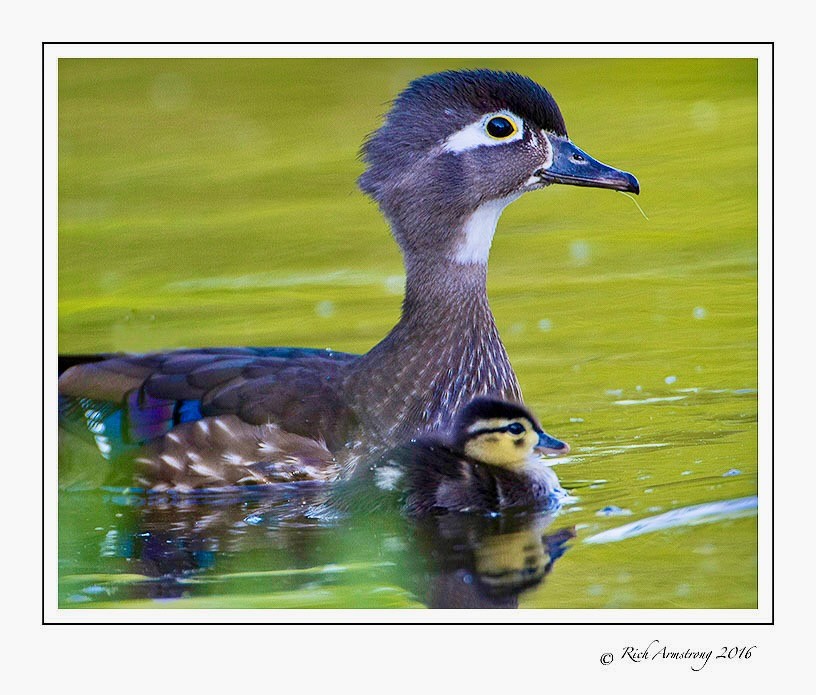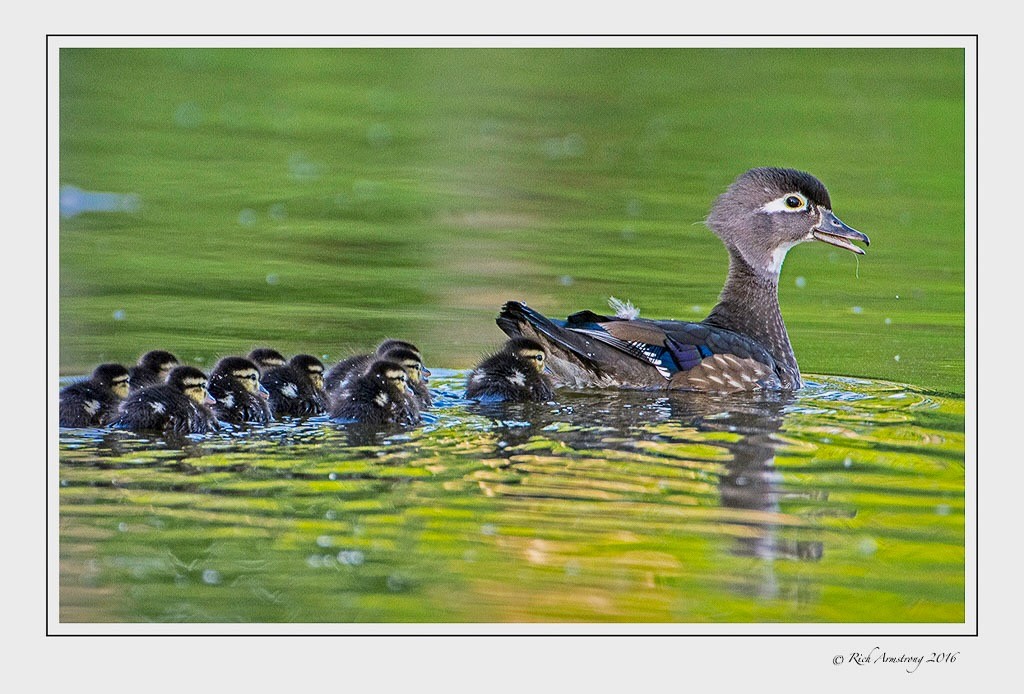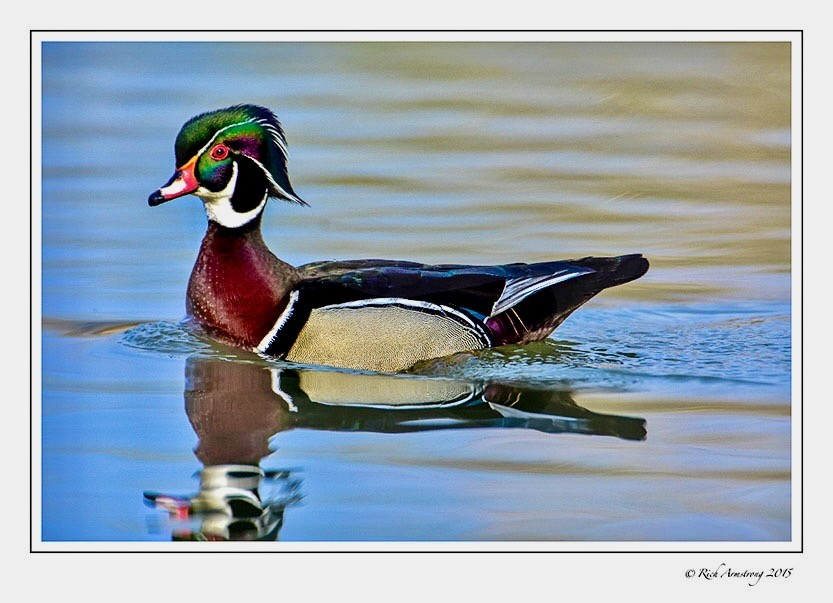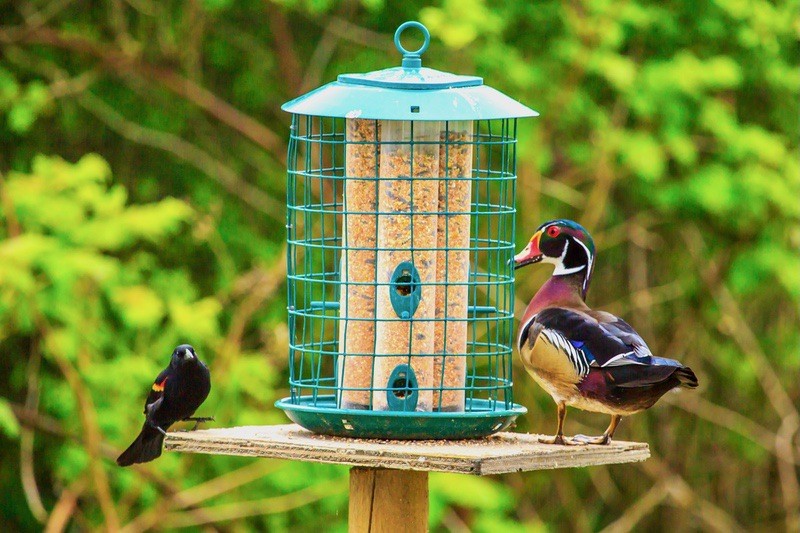Wood Duck
Based on available bird data from 2002 to mid-June 2025, the Wood Duck has only been recorded three times at Salter Grove, once each in May, October, and November with years separating the sightings. Individuals reported in the park were likely migrants from northern breeding populations.
Although more often sighted at nearby Pawtuxet Oxbows (Oxboes) Park, neither locality offers suitable tree holes nor the extensive bottomland forest that it prefers for breeding.
It is a hole-nester that breeds across the United States in woodland near or within a mile of water bodies such as impoundments, lakes, rivers, and ponds. Populations in southern Canada and northern United States migrate a short distance but the majority of populations from the mid-west to the east coast tend to stay put. The western populations breed from British Columbia to Northern Mexico and spend the winter in southern California and the Mexican Pacific coast.
The female Wood Duck has a shapely white eye patch and is more distinctively marked than the female of most other duck species. However, her plumage pales in comparison with the boldness in color and pattern of her mate. In the late 1800's The Wood Duck was hunted for meat and for the male's feathers to adorn women's hats both in the United States and in Europe.
Because of habitat loss due to human activities, and market hunting for meat and decorative feathers, the Wood Duck was nearly eliminated throughout much of its range early in the 20th Century. Fortunately, the Migratory Bird Treaty Act of 1918 was implemented to protect the Wood Duck as well as many other species in decline due to human activities. The combination of regenerating forests and the provision of nest boxes have helped Wood Duck populations rebound across its range.
In Rhode Island, the Wood Duck was considered a regular migrant but an uncommon summer resident in the late 1800's, with reports of nesting in Tiverton and Little Compton ponds. Since the 1950's, the Rhode Island Department of Environmental Management has had an active and successful nest box program to reverse the decline of the Wood Duck.
Data from the First (1982-1987) and Second (2015-2019) Breeding Bird Surveys indicate that both the number of sightings and instances of breeding have increased for the Wood Duck. Detection rising from 60 to 104 blocks surveyed, and instances of breeding from 34 to 58 blocks surveyed.
The recovery of the Wood Duck is such that it is the second most hunted duck in the United States, second only to the Mallard.
For more information:
https://www.allaboutbirds.org/guide/Wood_Duck
https://www.audubon.org/field-guide/bird/wood-duck
https://en.wikipedia.org/wiki/Wood_duck
https://animaldiversity.org/accounts/Aix_sponsa/
https://www.birdsbybent.com//////ch51-60/woodduck.html
https://www.fws.gov/law/migratory-bird-treaty-act-1918
https://erkesphoto.com/wood-ducks/jump-day/
Clarkson, C. E., Osenkowski, J. E., Steen, V. A., Duhaime, R. J., and Paton, W.C. (2023) The Second Atlas of Breeding Birds in Rhode Island. Rhode Island Department of Environmental Management Division of Fish and Wildlife. pp. 62-63.
Howe, Jr., R.H. and Sturtevant, E. (1899) The Birds of Rhode Island. pp. 13, 37.

